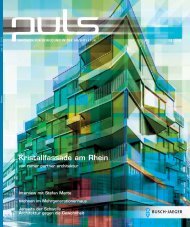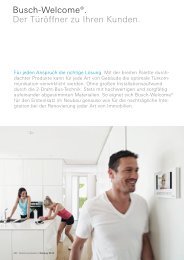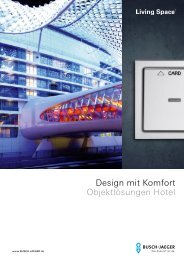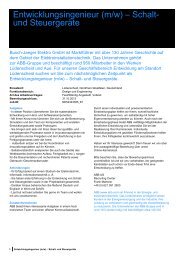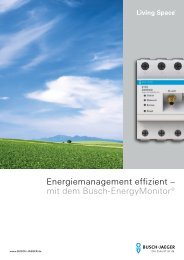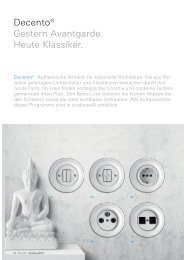The Ultimate Tower – Burj Dubai - Busch-Jaeger Elektro GmbH
The Ultimate Tower – Burj Dubai - Busch-Jaeger Elektro GmbH
The Ultimate Tower – Burj Dubai - Busch-Jaeger Elektro GmbH
Create successful ePaper yourself
Turn your PDF publications into a flip-book with our unique Google optimized e-Paper software.
<strong>The</strong> explosion of energy<br />
requirements in cities <strong>–</strong><br />
energy saving potential in<br />
every single household can<br />
help to counteract this.<br />
<strong>The</strong> Buildings of the Future <strong>–</strong><br />
recognise the energy-saving potential<br />
Never has electricity, gas and oil been more expensive than today <strong>–</strong> never has<br />
the careful management of energy been more worthwhile. Resource-sparing,<br />
efficient construction must exhaust all the possibilities of increasing energy<br />
efficiency. For the most part unused potential is to be found in the area of<br />
building automation. pulse identifies the opportunities of building management.<br />
By Prof. Dr.-Ing. Martin Becker<br />
Architecture and building automation seem, on first<br />
sight, to be two completely separate areas in which, however,<br />
big energy saving potential is possible. Against the<br />
background of the increasing demand for resource-sparing<br />
construction, it is necessary for the investor or developer<br />
to find a suitable compromise. Modern, energetic<br />
building planning is about finding a compromise<br />
between costs, energy efficiency as well as the comfort<br />
and convenience aspects for the user. For this not only the<br />
energy requirement values determined during the planning<br />
are important but also, during the planning phase, it<br />
is important to consider how to monitor and minimise<br />
the energy costs which will accumulate during the entire<br />
lifetime of the building. <strong>The</strong> running energy costs, such<br />
as energy or servicing expenses, contribute up to 80% of<br />
the entire lifecycle costs whereas the initially executed<br />
planning and construction costs only contribute 20%.<br />
From these numbers it can be seen that a contemporary<br />
and adapted building automation in addition to energy<br />
and building management play a decisive role in the<br />
» Micro<br />
economy and energy efficiency of the building. It is not<br />
rare for the values determined for energy consumption<br />
during planning to be exceeded by two or three times.<br />
Alongside the difficult-to-determine user influence the<br />
other reasons are non-optimally regulated installations<br />
as well as operating parameters which are not adapted to<br />
the utilisation. Clarifying these incorrect settings is also<br />
one of the responsibilities of building automation. <strong>The</strong><br />
energy consumption of a building is not of a fixed size<br />
but heavily dependent upon user behaviour and an optimal<br />
installation and building operation. Contemporary<br />
automisation techniques are necessary tools for dynamic<br />
energy and building management whereby all the necessary<br />
data is collected and evaluated. This data guarantees<br />
the necessary clarity about all the energy flows by means<br />
of appropriate energy data clusters in the building whilst<br />
also giving information about the positive as well as the<br />
negative influences of the users' behaviour. From this, it is<br />
then possible to introduce prompt and target-oriented<br />
economic optimisation measures.<br />
09



